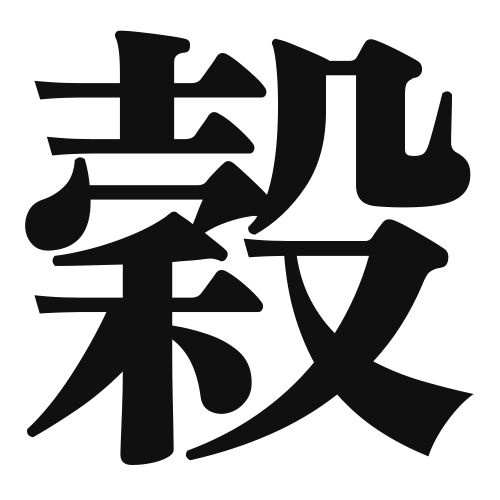1. Overview of Meaning
The kanji “穀” (goku) primarily means “grain” or “cereal.” It refers to various types of grains that are cultivated for food, such as rice, wheat, and barley. This character is often associated with agriculture and sustenance.
2. Formation and Radical
The kanji “穀” is a compound character (会意文字) that combines elements to convey its meaning. It consists of the radical “禾” (he), which represents “grain” or “cereal,” and the phonetic component “谷” (tani), which means “valley.” Together, they symbolize the idea of grains growing in fertile valleys.
The radical “禾” is commonly found in other kanji related to plants and agriculture, emphasizing the connection to nature and food production.
3. Examples of Usage
Some commonly used words and phrases that include the kanji “穀” are:
- 穀物 (gokubutsu) – grains, cereals
- 穀類 (gokurui) – grain types
In everyday conversation, you might hear sentences like:
- 「穀物は私たちの主食です。」(Gokubutsu wa watashitachi no shushoku desu.) – “Grains are our staple food.”
4. Synonyms and Antonyms
Similar kanji with related meanings include:
- 米 (kome) – rice, which specifically refers to the grain used as a staple food in Japan.
- 麦 (mugi) – wheat, which is another type of grain but distinct from “穀.”
Antonyms or contrasting kanji include:
- 肉 (niku) – meat, which represents animal products, contrasting with plant-based grains.
5. Cultural and Historical Background
The kanji “穀” has significant ties to Japanese culture, particularly in relation to agriculture and food. Grains have been a fundamental part of the Japanese diet for centuries, and rice, in particular, holds a special place in Japanese traditions and rituals.
Proverbs and idiomatic expressions related to “穀” include:
- 「穀物の神様」(Gokubutsu no kamisama) – “God of grains,” referring to deities associated with agriculture.
This highlights the reverence for grains in Japanese culture, reflecting their importance in daily life and spiritual practices.
